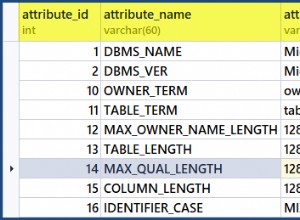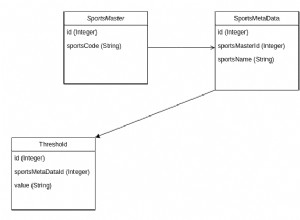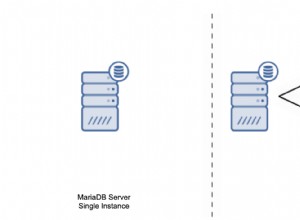Wystąpiły problemy z rokiem/dniami przestępnymi i następującą metodą, zobacz aktualizację poniżej:
spróbuj tego:
DECLARE @dob datetime
SET @dob='1992-01-09 00:00:00'
SELECT DATEDIFF(hour,@dob,GETDATE())/8766.0 AS AgeYearsDecimal
,CONVERT(int,ROUND(DATEDIFF(hour,@dob,GETDATE())/8766.0,0)) AS AgeYearsIntRound
,DATEDIFF(hour,@dob,GETDATE())/8766 AS AgeYearsIntTrunc
WYJŚCIE:
AgeYearsDecimal AgeYearsIntRound AgeYearsIntTrunc
--------------------------------------- ---------------- ----------------
17.767054 18 17
(1 row(s) affected)
AKTUALIZUJ oto kilka dokładniejszych metod:
NAJLEPSZA METODA OD LAT W INT
DECLARE @Now datetime, @Dob datetime
SELECT @Now='1990-05-05', @Dob='1980-05-05' --results in 10
--SELECT @Now='1990-05-04', @Dob='1980-05-05' --results in 9
--SELECT @Now='1989-05-06', @Dob='1980-05-05' --results in 9
--SELECT @Now='1990-05-06', @Dob='1980-05-05' --results in 10
--SELECT @Now='1990-12-06', @Dob='1980-05-05' --results in 10
--SELECT @Now='1991-05-04', @Dob='1980-05-05' --results in 10
SELECT
(CONVERT(int,CONVERT(char(8),@Now,112))-CONVERT(char(8),@Dob,112))/10000 AS AgeIntYears
możesz zmienić powyższe 10000 do 10000.0 i uzyskaj ułamki dziesiętne, ale nie będzie to tak dokładne, jak metoda poniżej.
NAJLEPSZA METODA OD LAT W DZIESIĄTKU
DECLARE @Now datetime, @Dob datetime
SELECT @Now='1990-05-05', @Dob='1980-05-05' --results in 10.000000000000
--SELECT @Now='1990-05-04', @Dob='1980-05-05' --results in 9.997260273973
--SELECT @Now='1989-05-06', @Dob='1980-05-05' --results in 9.002739726027
--SELECT @Now='1990-05-06', @Dob='1980-05-05' --results in 10.002739726027
--SELECT @Now='1990-12-06', @Dob='1980-05-05' --results in 10.589041095890
--SELECT @Now='1991-05-04', @Dob='1980-05-05' --results in 10.997260273973
SELECT 1.0* DateDiff(yy,@Dob,@Now)
+CASE
WHEN @Now >= DATEFROMPARTS(DATEPART(yyyy,@Now),DATEPART(m,@Dob),DATEPART(d,@Dob)) THEN --birthday has happened for the @now year, so add some portion onto the year difference
( 1.0 --force automatic conversions from int to decimal
* DATEDIFF(day,DATEFROMPARTS(DATEPART(yyyy,@Now),DATEPART(m,@Dob),DATEPART(d,@Dob)),@Now) --number of days difference between the @Now year birthday and the @Now day
/ DATEDIFF(day,DATEFROMPARTS(DATEPART(yyyy,@Now),1,1),DATEFROMPARTS(DATEPART(yyyy,@Now)+1,1,1)) --number of days in the @Now year
)
ELSE --birthday has not been reached for the last year, so remove some portion of the year difference
-1 --remove this fractional difference onto the age
* ( -1.0 --force automatic conversions from int to decimal
* DATEDIFF(day,DATEFROMPARTS(DATEPART(yyyy,@Now),DATEPART(m,@Dob),DATEPART(d,@Dob)),@Now) --number of days difference between the @Now year birthday and the @Now day
/ DATEDIFF(day,DATEFROMPARTS(DATEPART(yyyy,@Now),1,1),DATEFROMPARTS(DATEPART(yyyy,@Now)+1,1,1)) --number of days in the @Now year
)
END AS AgeYearsDecimal




